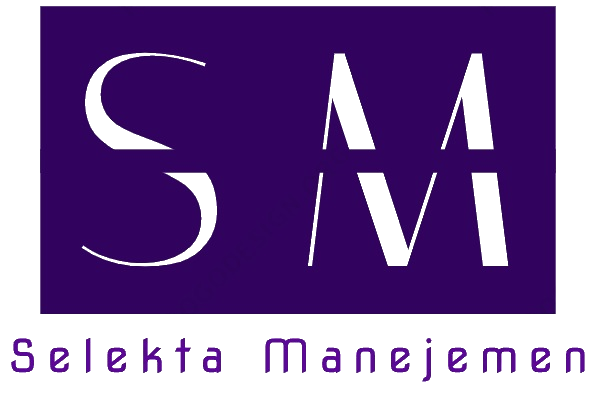Main Article Content
Abstract
Penelitian ini bertujuan untuk menganalisis bagaimana pengaruh antara kapabilitas inovasi, strategi rantai pasokan, dan kinerja bisnis. Adapun populasi yang digunakan dalam penelitian ini yaitu coffee shop yang berlokasi di Daerah Istimewa Yogyakarta. Jumlah sampel yang digunakan dalam penelitian ini adalah sebanyak 96 responden. Data penelitian dikumpulkan dengan cara menyebarkan kuesioner dengan mengunjungi langsung coffee shop dan melalui sistem online survey menggunakan Google Form. Metode analisis dalam penelitian ini menggunakan regresi linear berganda dan analisis regresi moderasi dengan alat bantu aplikasi SPSS 25. Hasil penelitian menunjukkaan bahwa kapabilitas inovasi inti dan kapabilitas inovasi tambahan berpengaruh signifikan terhadap kinerja bisnis. Penelitian ini juga menunjukkan bahwa baik strategi rantai pasokan ramping maupun strategi rantai pasokan tangkas mampu memperkuat hubungan antara kapabilitas inovasi inti serta kapabilitas inovasi tambahan dengan kinerja bisnis.
Article Details
Copyright (c) 2022 Farah Putri Ma'ruf, Al Hasin

This work is licensed under a Creative Commons Attribution-ShareAlike 4.0 International License.
References
- Arikunto, S. (2005) Manajemen Penelitian. Jakarta: Rineka Cipta.
- Berita Resmi Statistik (2021) Pertumbuhan Ekonomi Indonesia Triwulan III-2021. Available at: https://www.bps.go.id/pressrelease/2021/11/05/1814/ekonomi-indonesia-triwulan-iii-2021-tumbuh-3-51-persen--y-on-y-.html.
- Galloway, A. (2005) ‘Non-Probability Sampling’, in Kempf-Leonard, K. (ed.) Encyclopedia of Social Measurement. Edinburgh: Queen Margaret University College, pp. 859–864. doi: https://doi.org/10.1016/B0-12-369398-5/00382-0.
- Gao, Y. (Lisa), Mattila, A. S. and Lee, S. (2016) ‘A meta-analysis of behavioral intentions for environment-friendly initiatives in hospitality research’, International Journal of Hospitality Management, 54, pp. 107–115. Available at: https://doi.org/10.1016/j.ijhm.2016.01.010.
- Guan, J. and Ma, N. (2003) ‘Innovative capability and export performance of Chinese firms’, Technovation, 23(9), pp. 737–747. Available at: https://doi.org/10.1016/S0166-4972(02)00013-5.
- Guzman, G. M. et al. (2018) ‘Innovation Capabilities and Performance: Are They Truly Linked in SMEs?’, International Journal of Innovation Science, 11(1), pp. 48–62. Available at: https://doi.org/10.1108/IJIS-12-2017-0139.
- Iyer, K. N. ., Srivastava, P. and Srinivasan, M. (2019) ‘Performance Implication of Lean in Supply Chains: Exploring the Role of Learning Orientation and Relational Resources’, International Journal of Product Innovation, 216(2019), pp. 94–104. Available at: https://doi.org/10.1016/j.ijpe.2019.04.012.
- Mahdyantoro, H. H. (2019) Pengaruh Praktik dan Kapabilitas Manajemen Kualitas Rantai Pasokan Terhadap Kinerja Operasional dan Inovasi (Studi Empiris Pada Industri Kedai Kopi di Daerah Istimewa Yogyakarta). Yogyakarta. Available at: https://dspace.uii.ac.id/handle/123456789/20646.
- Prakash, A. et al. (2016) ‘Productivity, Quality, and Business Performance: An Empirical Study’, International Journal of Productivity and Performance Management, 66(1), pp. 78–91. doi: 10.1108/IJPPM-03-2015-0041.
- Qi, Y. et al. (2017) ‘The impact of operations and supply chain strategies on integration and performance’, International Journal of Production Economics, 185, pp. 162–174. Available at: https://doi.org/10.1016/j.ijpe.2016.12.028.
- Qi, Y., Boyer, K. K. and Zhao, X. (2009) ‘Supply Chain Strategy, Product Characteristics, and Performance Impact: Evidence from Chinese Manufacturers’, Decision Sciences Institute, 40(4), pp. 667–695. Available at: https://doi.org/10.1111/j.1540-5915.2009.00246.x.
- Qi, Y., Zhao, X. and Sheu, C. (2011) ‘The Impact of Competitive Strategy and Supply Chain Strategy on Business Performance: The Role of Environmental Uncertainty’, Decision Sciences, 42(2), pp. 371–389. Available at: https://doi.org/10.1111/j.1540-5915.2011.00315.x.
- Shashi et al. (2020) ‘Agile supply chain management: where did it come from and where will it go in the era of digital transformation?’, Industrial Marketing Management, 90, pp. 324–345. Available at: https://doi.org/10.1016/j.indmarman.2020.07.011.
- Yusuf, Y. Y. and Gunasekaran, A. (2010) ‘Agile manufacturing: A taxonomy of strategic and technological imperatives’, International Journal of Production Research, 40(6), pp. 1357–1385. doi: 10.1080/00207540110118370.
- Zimmermann, R., Ferreira, L. M. D. F. and Moreira, A. C. (2020) ‘How supply chain strategies moderate the relationship between innovation capabilities and business performance’, Journal of Purchasing and Supply Management, 26(5). doi: 10.1016/j.pursup.2020.100658.
References
Arikunto, S. (2005) Manajemen Penelitian. Jakarta: Rineka Cipta.
Berita Resmi Statistik (2021) Pertumbuhan Ekonomi Indonesia Triwulan III-2021. Available at: https://www.bps.go.id/pressrelease/2021/11/05/1814/ekonomi-indonesia-triwulan-iii-2021-tumbuh-3-51-persen--y-on-y-.html.
Galloway, A. (2005) ‘Non-Probability Sampling’, in Kempf-Leonard, K. (ed.) Encyclopedia of Social Measurement. Edinburgh: Queen Margaret University College, pp. 859–864. doi: https://doi.org/10.1016/B0-12-369398-5/00382-0.
Gao, Y. (Lisa), Mattila, A. S. and Lee, S. (2016) ‘A meta-analysis of behavioral intentions for environment-friendly initiatives in hospitality research’, International Journal of Hospitality Management, 54, pp. 107–115. Available at: https://doi.org/10.1016/j.ijhm.2016.01.010.
Guan, J. and Ma, N. (2003) ‘Innovative capability and export performance of Chinese firms’, Technovation, 23(9), pp. 737–747. Available at: https://doi.org/10.1016/S0166-4972(02)00013-5.
Guzman, G. M. et al. (2018) ‘Innovation Capabilities and Performance: Are They Truly Linked in SMEs?’, International Journal of Innovation Science, 11(1), pp. 48–62. Available at: https://doi.org/10.1108/IJIS-12-2017-0139.
Iyer, K. N. ., Srivastava, P. and Srinivasan, M. (2019) ‘Performance Implication of Lean in Supply Chains: Exploring the Role of Learning Orientation and Relational Resources’, International Journal of Product Innovation, 216(2019), pp. 94–104. Available at: https://doi.org/10.1016/j.ijpe.2019.04.012.
Mahdyantoro, H. H. (2019) Pengaruh Praktik dan Kapabilitas Manajemen Kualitas Rantai Pasokan Terhadap Kinerja Operasional dan Inovasi (Studi Empiris Pada Industri Kedai Kopi di Daerah Istimewa Yogyakarta). Yogyakarta. Available at: https://dspace.uii.ac.id/handle/123456789/20646.
Prakash, A. et al. (2016) ‘Productivity, Quality, and Business Performance: An Empirical Study’, International Journal of Productivity and Performance Management, 66(1), pp. 78–91. doi: 10.1108/IJPPM-03-2015-0041.
Qi, Y. et al. (2017) ‘The impact of operations and supply chain strategies on integration and performance’, International Journal of Production Economics, 185, pp. 162–174. Available at: https://doi.org/10.1016/j.ijpe.2016.12.028.
Qi, Y., Boyer, K. K. and Zhao, X. (2009) ‘Supply Chain Strategy, Product Characteristics, and Performance Impact: Evidence from Chinese Manufacturers’, Decision Sciences Institute, 40(4), pp. 667–695. Available at: https://doi.org/10.1111/j.1540-5915.2009.00246.x.
Qi, Y., Zhao, X. and Sheu, C. (2011) ‘The Impact of Competitive Strategy and Supply Chain Strategy on Business Performance: The Role of Environmental Uncertainty’, Decision Sciences, 42(2), pp. 371–389. Available at: https://doi.org/10.1111/j.1540-5915.2011.00315.x.
Shashi et al. (2020) ‘Agile supply chain management: where did it come from and where will it go in the era of digital transformation?’, Industrial Marketing Management, 90, pp. 324–345. Available at: https://doi.org/10.1016/j.indmarman.2020.07.011.
Yusuf, Y. Y. and Gunasekaran, A. (2010) ‘Agile manufacturing: A taxonomy of strategic and technological imperatives’, International Journal of Production Research, 40(6), pp. 1357–1385. doi: 10.1080/00207540110118370.
Zimmermann, R., Ferreira, L. M. D. F. and Moreira, A. C. (2020) ‘How supply chain strategies moderate the relationship between innovation capabilities and business performance’, Journal of Purchasing and Supply Management, 26(5). doi: 10.1016/j.pursup.2020.100658.

